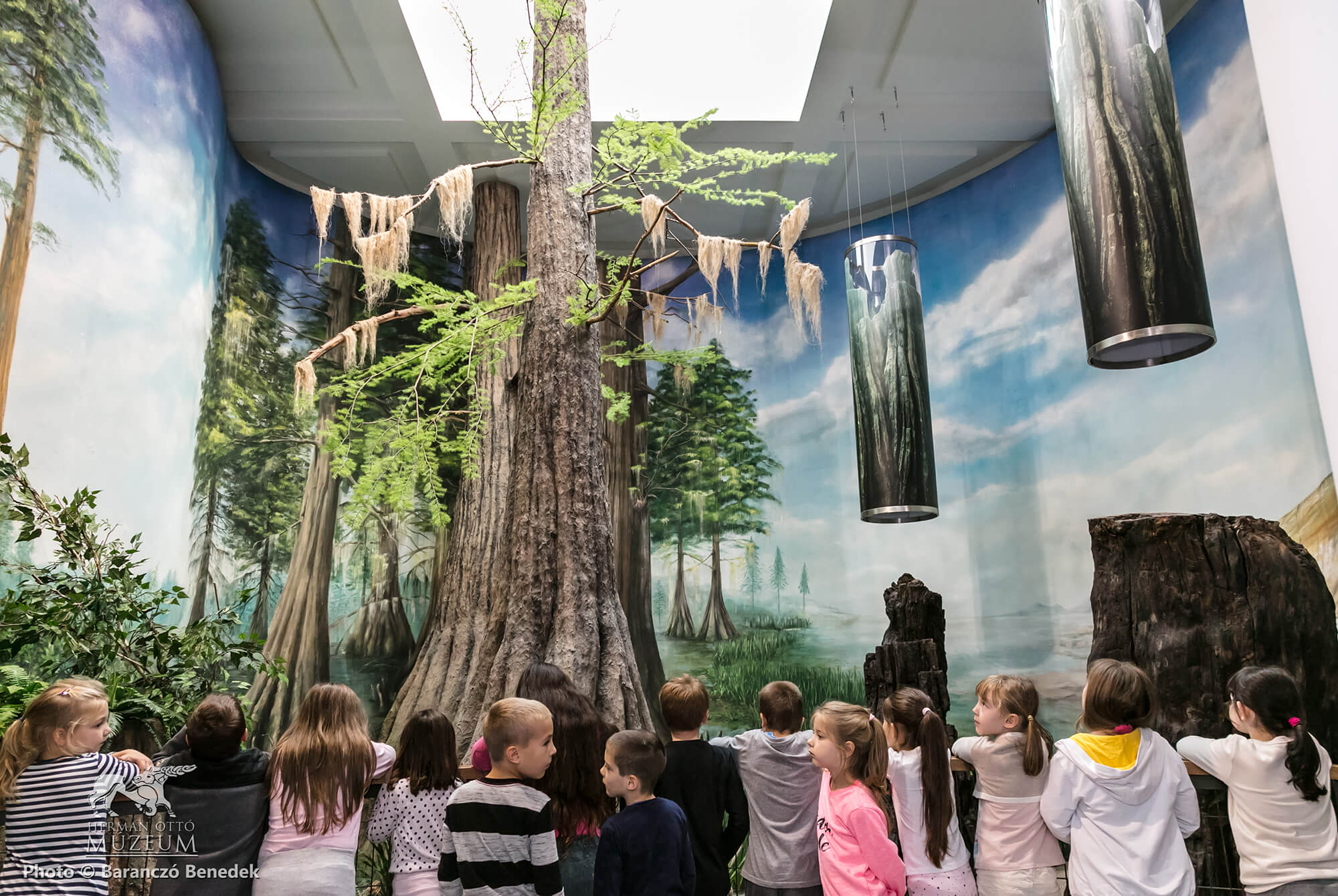On trails of primitive forests
The bald cypress forest of Bükkábrány and its epoch
permanent exhibition
The rise of the ring of the Carpathians can be dated to the last 100 million year long period of the Earth’s history. Movement of the Earth’s crust, the uplift and subduction of its pieces contributed to the formation of the Pannonian Basin. During the Cenozoic (the most recent of the geological eras), this area was flooded from time to time by the progressing and regressing Tethys Ocean. Thus in the Miocene epoch, approximately 5.3 million years ago, a huge water body existed in this area, which is now called the Pannonian Basin. It was the Pannonian Sea and later Lake Pannon. Above the shallow water, hot volcanoes were towering (today some of these are parts of the North Hungarian Mountains), and its swampy coast, indented by peninsulas, was covered by bald-cypress forests. This was the era of bald-cypresses…
What was the Earth like at that time? What creatures inhabited this land? Did humans exist? Our exhibition guides us into this ancient time, which is full of secrets. Fossil finds and accurate illustrations show us the aspects of the Miocene, and with playful and interactive activities we can be part of the astounding world of the 7 million years old bald-cypresses.
As we begin our journey, at the bottom of the stairs, a bubble wall makes the premise glimmering blue. It indicates that soon, we can submerge into the secrets of the former sea. First we pass under the timeline, which shows the whole history of the Earth, and as we learn even more about some major, determining events, we can have the impression that the Miocene epoch might not have been so long ago after all. After this, we pass by the small scaled version of the sediment layers of the Bükkábrány Coal Mine. At the lower level of the building, we can admire the dominant giants, the bald-cypresses within reach. While we learn about the history of these trees, their relatives and their characteristics, bird song is spreading the word of life in the background.
We can learn about palaeomagnetism and different raw materials, which can be connected to the Miocene period, in a playful way, and we can even witness a volcanic eruption. We can meet the flora and fauna of 18 million years through their fossils. Some of them are quite shocking, such as the Chalicotherium, or the Platybelodon, which is an ancient proboscidean with an odd-looking mouth. The example of the horses shows us what kind of teeth we will need if we decide that we start eating only grass from now on. The brave ones can try taming the largest shark ever lived. Walking among the remains of the former flora, several fossil finds give evidence about the previously existing vegetation.
In a separate room, we can see the diorama of the world-famous palaeontological site of Rudabánya, where Gabi (Rudapithecus hungaricus) is supervising her own excavation.
All of these give us only a small taste of the wonderful and varied exhibition, where all age groups can find their fitting amusement. Beside the rich fossil collection, interactive games help in getting to know the past and gaining new knowledge. Visit us in person and be part of this adventurous time travel.
Related services:
Related collection: https://ptm.hermuz.hu
